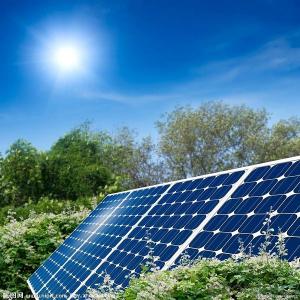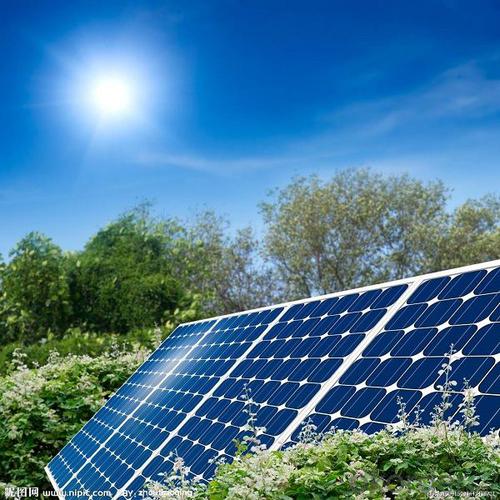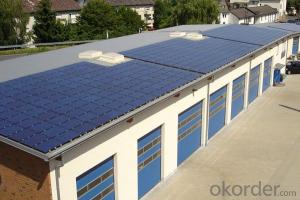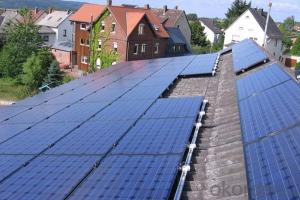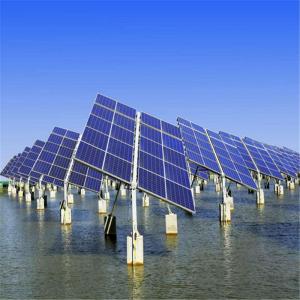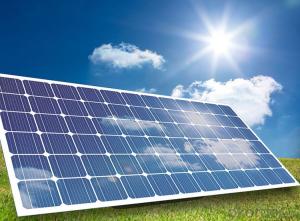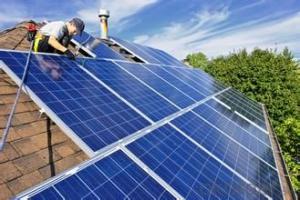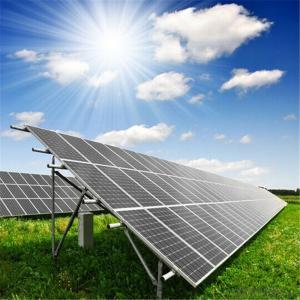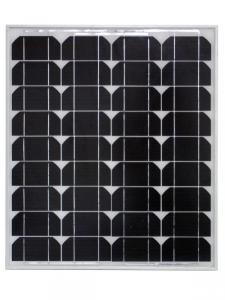High Power 235W/30V Poly Solar Panel for Flat Roof Installation
- Loading Port:
- Tianjin
- Payment Terms:
- TT OR LC
- Min Order Qty:
- 100 watt
- Supply Capability:
- 10000 watt/month
OKorder Service Pledge
OKorder Financial Service
You Might Also Like
Specification
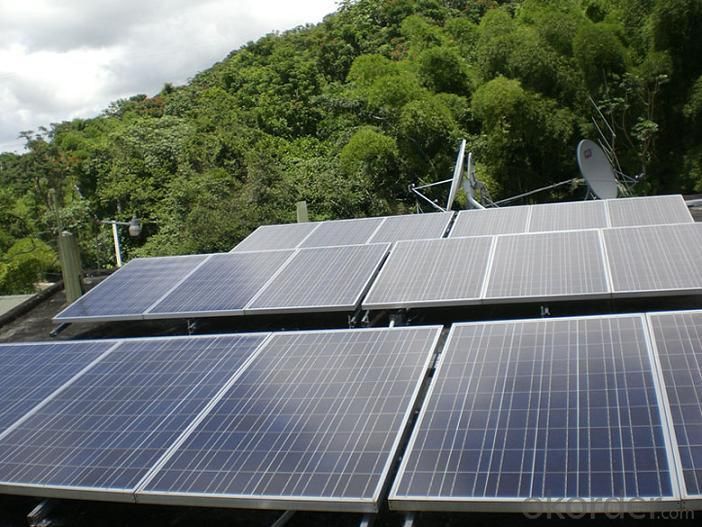
Quality Ensurance:
1. Excellent A Grade solar cell from Motech or Hanwha solar.
2. Excellent backsheet from SFC, 3M;
3. EVA from Bridgestone / First;
4. Junction box with UL and TUV listed - GZX, IP65;
5. High transmission low iron tempered glass from Xinyi Glass - China Top 1;
6. Solar panels with TUV, CE, ISO9001 certified.
Strong, lightweight aluminum frame design with reinforced sealing and load hold to prevent freezing and warping, and stand against high wind.
Under Standard Test Conditions(STC): Irradiance of 1000W/m2, Am1.5 and 25º C cell temperature
Operating Temperature: -40 ~ +85° C
Storage Temperature: -40 ~ +85° C
Mechanical Characteristics:
Dimensions: 1665mm(L) x 991mm(W) x 50mm(H)
Weight: 19.8KG
Polycrystalline 156*156 solar cells: 60 cells
Module Warranty:
Warranty on material and workmanship: Five years
Guaranteed output of 90% after 10 years and 80% after 25 years.
Application: Widely used in solar power plant.
| Performance | ||
| Rated Power[Pmax] | 235W | |
| Power Tolerance | ± 3% | |
| Nominal Voltage | 30V | |
| Design Life | 25 years | |
| Electrical Characteristics | ||
| Maximum Power [Pmax] | 235W± 3% | |
| Maximum Power Voltage [Vmp] | 30.58V± 3% | |
| Maximum Power Current [Imp] | 7.69A± 3% | |
| Short-Circuit Current [Isc] | 8.26A± 3% | |
| Open-Circuit Voltage [Voc] | 36.78V± 3% | |
| Current Temperature Coefficient | 0.08%/º C | |
| Voltage Temperature Coefficient | - 0.32%/º C | |
| Power Temperature Coefficient | -0.38%/º C | |
| Maximum System Voltage | 1000V | |
- Q: I'm from Toledo, OH about 2 miles from the MI line. We are a foster family and have adopted 5 children. We just moved into a 5400+sq 2 story home. We have (3) 2.5-3 ton AC units to cool this huge house. We got the house cheap...$75k couldn't pass it up! Anyway...I was wondering how many solar panels it would take and of what wattage to power these Central Air Units and maybe the rest of the house. We have 3 people in our home......9 of which are children who leave the lights on and run hot water to beat the band. We have all brand new energy star appliances and front loader washer and dryer. Gas Range and Gas hot water tank. Was thinking of using metal window frames and buying solar cells and making my own panels. Just don't know how much to buy. We face south with no trees. Constant Sun. thanks for your help. An e-mail address to bounce questions off of would be helpful if you experienced. tx.
- Basically, the answer to your question is forget it. Your approx 8 tons of AC will require about 28 KW of electricity just to run them. Add the rest of the house requirements and your talking a load of 50KW or more. Even if your state has a subsidy program, (and most of them are out of money now), it's a $200,000. system. Making your own panels would be a mistake. Reliability and survival are the key measures for a panel system and homemade panels are just not going to be reliable enough to survive the cold winters. In the end, it is always cheaper to buy good, conservatively rated commercial panels, especially in view of the fact that prices have been tumbling lately. Often, the mounting, interface and conversion costs are greater than the cost of the panels themselves. You might save some bucks by fabricating a mounting framework yourself and installing it, but such a system would not qualify for most state programs and.... you had better be an expert architect or engineer to put together something that will work well. The basic problem after all of this is that your maximum demand will be at night and the panels put out nothing at night. Better to forget about a 00% solution. You can install a modest 0 - 20KW system for perhaps $50,000 costs after rebates and subsidies and perhaps ... it might cover about /4 of your energy needs and might just, pay the investment back in 0 to 5 years. Get first rate equipment and professional installation, if you want the system to perform reliably. Solar voltaics make a lot of sense for Arizona and perhaps Florida. For anyone north of the Mason Dixon line however, fossil fuels are cheap, reliable and work far better.
- Q: Is there a cheaper way on how to make your own solar panels ? Can someone share their real life experience ? Thank you.
- On my website you can read my story of how my dad made solar panels at home for a little over $200, and now he pays nothing to the electric company.
- Q: hi,i have 4 solar panels. I can get 9V 400mA when i wired them parallel. The question is: how can i make a regulator circuit to store power into batteries.
- wire them in series parallel to get 8 volts at 200 mA, and that should charge a 2 volt battery. You may want to put in a series diode to prevent the battery from discharging into the panel when the sun is out. At 200 mA, depending on the battery size, you may not need much control, as that low a current will not overcharge a large battery, like a small auto battery. In fact it will take a very long time to charge it. edit: But do i need to add a regulator? If by that you mean a voltage regulator, no, as a solar panel has a high output resistance, and that will limit the current into the battery. If you mean a charge controller, if the battery is small, you may need a charge contoller to avoid overcharging the battery. But that is not a voltage regulator. .
- Q: I have a solar panel, charge regulator, inverter....is that all I need to tie it into my grid? Do I just plug the solar panel into the charge regulator into the inverter into any 0v outlet? I feel like im missing something....
- No don't do that unless you want a fire or worse electricution . DO NOT PLUG INTO THE WALL . st solar panel 2nd regulator 3rd 2 volt battery 4th inverter . The inverter should have 0 volt terminals that look like the plug on the wall . You would plug your TV or light into that the inverter . You would need an electrition to hook into your home electrical system . They will hook up a device made to tie into the grid or your meter that will make it run backwards but it takes alot of solar panels too do that . Please do not plug into wall .
- Q: Can solar panels be installed on a university campus or educational facility?
- Yes, solar panels can certainly be installed on a university campus or educational facility. In fact, many educational institutions have already embraced solar energy as a sustainable and cost-effective solution. Installing solar panels can help universities reduce their carbon footprint, save money on energy costs, and serve as an educational tool for students to learn about renewable energy.
- Q: I am doing a science fair project on solar panels, and I need four solar panels to conduct the experiment. I would only need the solar panels for a week. What type of solar panel should I get?
- It okorder /... More info is needed about your experiment to help decide what you need.
- Q: Can solar panels be installed in areas with high levels of air pollution?
- Yes, solar panels can be installed in areas with high levels of air pollution. While air pollution may slightly reduce the efficiency of solar panels by blocking sunlight, they can still generate electricity even in polluted environments. Regular maintenance and cleaning of the panels can help mitigate any potential impact on their performance. Additionally, solar energy remains a sustainable and environmentally friendly option, regardless of air pollution levels.
- Q: I am going to be building green in the next couple of years and i need an idea of how many solar panels i need in addition to a wind turbine to sufficiently handle a workshop, house, green house, etc. and what the approximate cost will be.
- Photovoltaic solar panels are priced by the watt. Average price today is just under $4.00 per watt. More efficient panels take less space to produce the same amount of electricity. To design a system, you first must decide how much power you are looking to produce. then you look at the various products to find what fits your need. if you have a very compact space, you may pay more for more per watt for really efficient panels, but if you have a good amount of space you can get lower cost panels that take more space and cost less. With a wind turbine complimenting your system you will only need a modest battery storage bank. 5kw system could get you off grid entirely! 5,000 watts x $4.00 = $60,000. 3kw system with net metering mat cost about $2,000. Many homeowners (like me) build their systems piecemeal to keep costs manageable. Good Luck! P.S. - If you build it with the house, the price can be rolled into the mortgage. $60,000 would add +/- $300.00 a month to your payment, but you would have no Electric bill, a savings of $00-200 a month. Once it is paid for, you only have to pay maintenance costs.
- Q: How do solar panels affect the overall carbon footprint of a building?
- Solar panels can significantly reduce the overall carbon footprint of a building. By harnessing clean and renewable energy from the sun, solar panels generate electricity without emitting greenhouse gases. This means that the building relies less on fossil fuel-based electricity, reducing its carbon emissions. Additionally, solar panels can offset the energy consumption of a building, further minimizing its carbon footprint, making it a sustainable and environmentally-friendly choice.
- Q: Can solar panels be installed on waste treatment plants?
- Yes, solar panels can be installed on waste treatment plants. In fact, many waste treatment plants are increasingly adopting solar energy systems to reduce their reliance on traditional energy sources and lower their carbon footprint. Solar panels can be installed on the rooftops or open land areas of these plants, providing a sustainable and renewable source of electricity for their operations.
Send your message to us
High Power 235W/30V Poly Solar Panel for Flat Roof Installation
- Loading Port:
- Tianjin
- Payment Terms:
- TT OR LC
- Min Order Qty:
- 100 watt
- Supply Capability:
- 10000 watt/month
OKorder Service Pledge
OKorder Financial Service
Similar products
Hot products
Hot Searches
Related keywords
